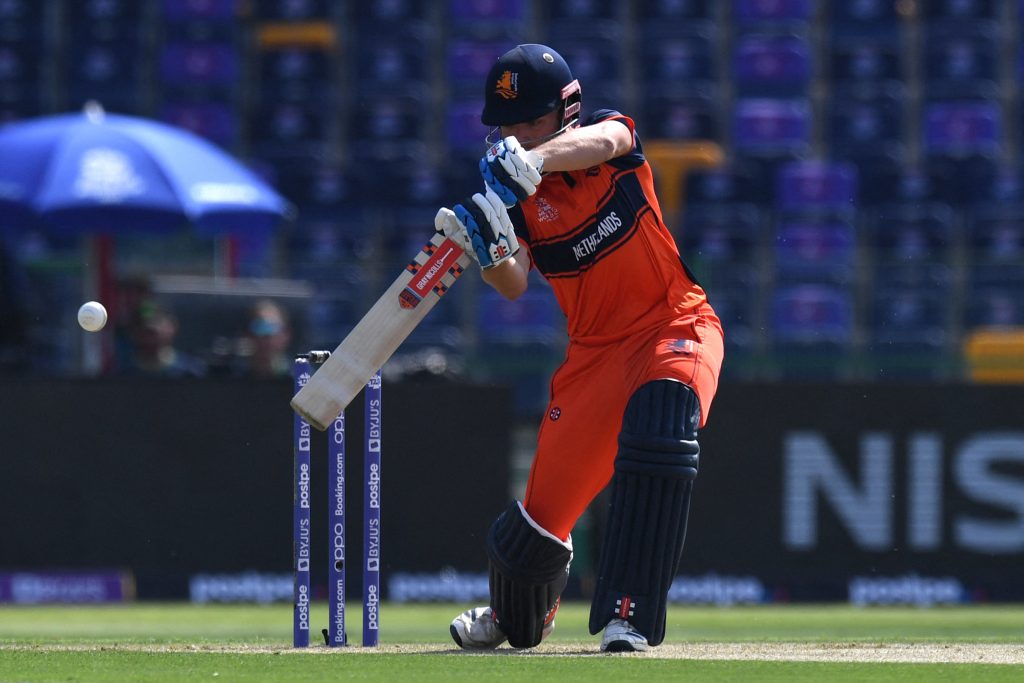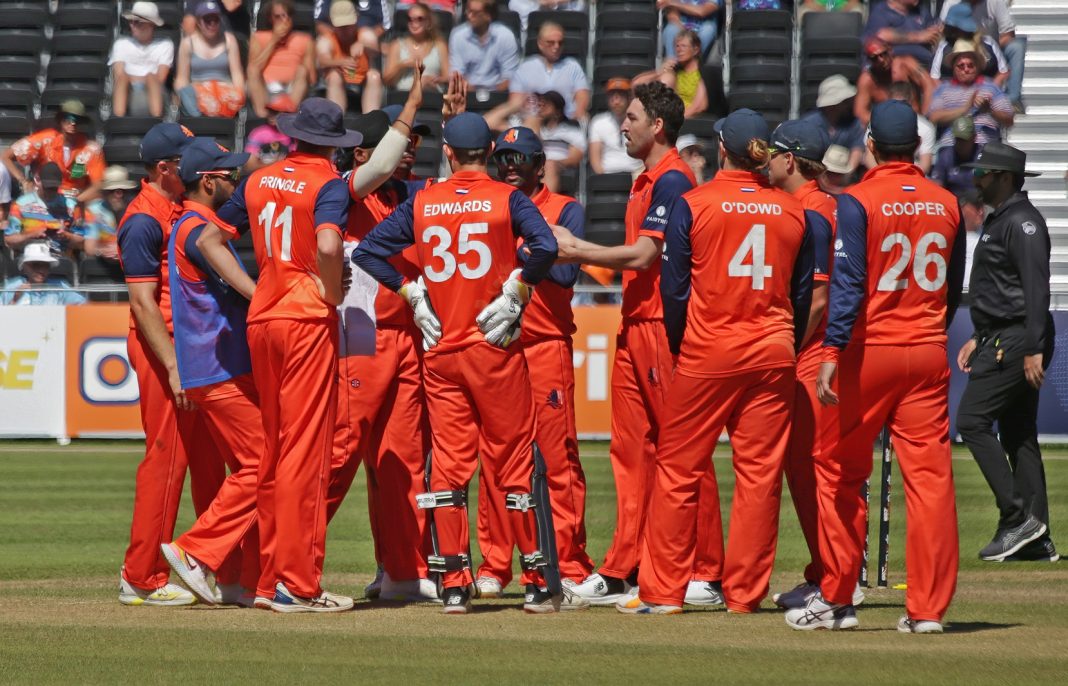Feature picture: Sander Tholen
The immediate answer, of course, is presumably to Zimbabwe, and possibly to South Africa, to complete their Super League programme.
But the question also has a more philosophical resonance, or at least a medium-to-long-term one: what are the realistic options for men’s international cricket over the next few years, given the lamentable abolition of the Super League and an FTP which – all too predictably – offers little or nothing to the leading Associates?
In his recent interview with Emerging Cricket, the KNCB Board member with responsibility for High Performance issues, Reinout Scholte, pointed towards one potentially extremely interesting answer: since the ICC Full members cannot be relied upon for much assistance, he argued, the Associates need to do more for themselves, working together to raise the level of their cricket.
He referred specifically to the tournaments among the Associates, sometimes involving Full member A teams, which were a feature of the international calendar twenty or thirty years ago, but the implications of his argument go further than this.
As we emerge from ‘The Summer of Cricket’ (worrying, that definite article, since it seems to suggest that this may have been Dutch cricket’s one and only summer), we can envisage a future schedule which involves four groups of potential opponents.
First, of course, there are the Full members, and after the visits of the West Indies, England, New Zealand and Pakistan over the past three months we can at least claim that the Dutch can offer excellent venues and hospitality to satisfy the most demanding of guests.
Not everything was perfect, it is true, and there is plenty of scope for a review of what went well and what didn’t, but the atmosphere at the England and Pakistan series in particular – largely due to the enthusiasm of the visitors’ supporters – stood up to comparison with all but the most classical cricket settings.
But we know all too well that the Full members have little time to spare for encouraging the Associates, and as the international programme becomes ever more congested with franchise T20 leagues their interest in arranging bilateral series against the likes of the Netherlands seems doomed to dwindle even beyond the pathetic levels of the past couple of decades.

Ireland and Zimbabwe, perhaps, may be special cases, and it was an encouraging sign to see Ireland’s High Performance Manager, Richard Holdsworth, in Voorburg last week during the Women’s ODI series.
Beyond the twelve Full Members, however, there are six more Associates which hold ODI status: only Scotland within Europe, it is true, but the others include Namibia, the UAE and Nepal, all of them prospective candidates for bilateral ODI series or a triangular tournament, not to mention the USA, Oman and Papua New Guinea.
Beyond that select company there are the dozen countries who are playing in the ICC Challenge League, which has List A status: three of these (Denmark, Jersey and Italy) are in the European region.
It does not seem that bilateral fixtures between Challenge League participants, or between them and the Associates with ODI status – or for that matter, the Full members – carry List A status, but that is surely an anomaly and should certainly be rectified; if a match between Jersey and Italy in a Challenge League tournament counts as List A, why should not a 50-over bilateral series between either of them and Denmark enjoy the same status, and equally, why would that status be denied to a series between Denmark and the Netherlands, or a triangular tournament involving the Netherlands, Denmark and Italy?
What is certain is that all ICC members are now eligible to play T20 Internationals, and with Denmark, Jersey and Italy having qualified for next year’s European regional qualifier for the 2024 T20 World Cup, they will all have an interest in arranging preparatory fixtures early next season, while the KNCB’s planning horizon will hopefully extend well beyond what is already promising to be a busy international summer, albeit mostly outside the Netherlands.
Follow Emerging Cricket on Instagram, and now on TikTok
And then there’s the final group of potential opponents, at least in the T20 format, countries in the top forty of the ICC rankings such as Germany, Austria, Spain, Guernsey, the Isle of Man and Belgium; the first two of these are also heading to the European qualifier, and again will presumably be on the hunt for warm-up fixtures.
It must be acknowledged that the Dutch have in the past been scarcely more willing than the Full Members to arrange matches against teams below them in the pecking order: apart from the Continental Cup tournaments in Schiedam (now, perhaps, in line for a revival with a more ambitious agenda), games between the Netherlands and Associates other than Ireland and Scotland have been few and far between.

The Netherlands last played a bilateral T20 against Denmark in 2008, and there has been no 50-over game between the full sides since 2006; Italy played a KNCB XI in Schiedam in 2016 but otherwise the countries have never met outside the now regrettably defunct European Championship (where the sides had two wins apiece); the last full international between the Netherlands and Belgium was, believe it or not, in 1937.
Unquestionably among the strongest men’s Associate teams for many years, the eyes of the Dutch have understandably been focused on global competitions and their qualifiers, and on the remote prospect of an occasional bilateral fixture against a Full member, and while lip service has been paid to the concept of noblesse oblige it has not often been manifested in practice.
But it’s not only altruism which should now lead to a much more creative approach to the international fixture list: by arranging regular fixtures against European neighbours and by touring outside Europe in the close season, the KNCB can provide development opportunities for its crop of talented young players, as well as perhaps giving them an experience of winning which some of them have never as yet enjoyed.
You’re reading Emerging Cricket — brought to you by a passionate group of volunteers with a vision for cricket to be a truly global sport, and a mission to inspire passion to grow the game.
Be sure to check out our homepage for all the latest news, please subscribe for regular updates, and follow EC on Twitter, Facebook, LinkedIn and YouTube.
Don’t know where to start? Check out our features list, country profiles, and subscribe to our podcast.
Support us from US$2 a month — and get exclusive benefits, by becoming an EC Patron.







